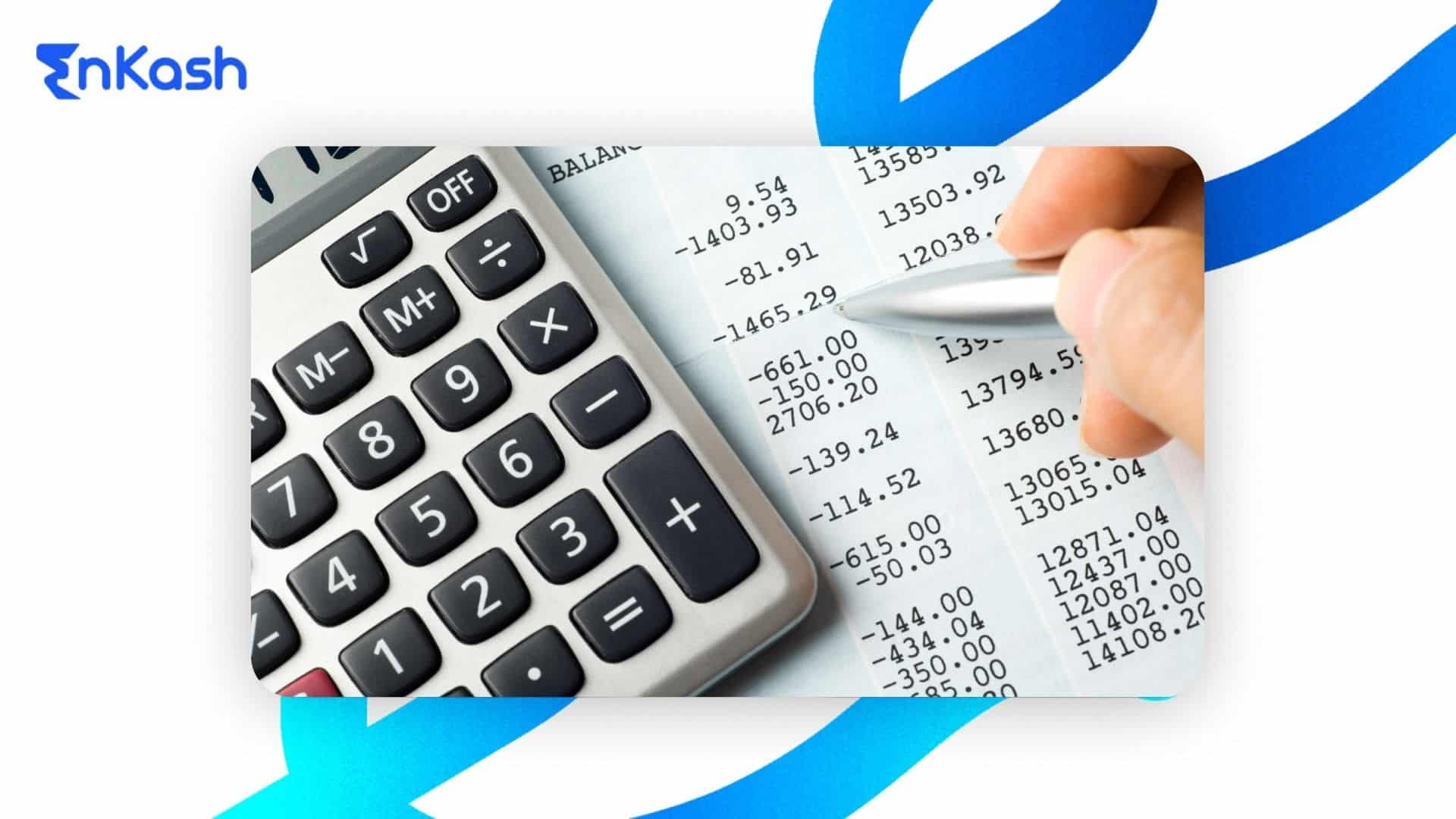Introduction
Every financial transaction in a business leaves a trail. Sometimes money comes in from a customer, sometimes it goes out to pay a vendor. No matter the size of the business, keeping proper records is important, especially in India, where taxes, filings, and audits are part of the routine.
The double-entry accounting system helps with this. It’s a method where every transaction is recorded in two places. One side shows where the money came from, and the other shows where it went. This keeps things balanced, avoids confusion, and helps businesses stay on top of their actual financial position.
With increasing GST filing requirements, digital audit trails, and formalisation of business practices, Indian enterprises, even smaller ones, are moving towards proper accounting systems. It’s becoming essential.
What is the Double-Entry Accounting System?
The double-entry accounting system is a method of recording every financial transaction in two corresponding accounts. For every amount that comes in, there’s an equal and opposite effect on another account. One side is marked as a debit, the other as a credit.
It’s based on a very simple idea: money doesn’t just appear or disappear, it moves from one place to another. If a business spends money buying raw materials, its cash reduces (credit) while its inventory increases (debit). If a customer pays for a service, the bank account (an asset) is debited and the revenue account (income) is credited. There are always two sides. Always balanced.
This structure isn’t just for large companies. Even small Indian businesses that deal with daily cash, bank transactions, supplier payments, customer credit, or inventory can benefit from this format. It avoids guesswork and provides a full picture of what’s happening inside the business. Whether done manually in traditional ledger books or through accounting software, this system forms the foundation for preparing financial statements such as the profit and loss account and the balance sheet. The cash flow statement, while related, is usually derived from these two
Read More: What is Accounting?
Why Do Businesses Use the Double-Entry System?
Most businesses deal with money coming in and going out almost every day. Someone pays for a product, or a payment is made to a supplier. If only one side of the transaction is recorded, it’s easy to lose track of where the money went or came from. That’s where the double-entry system makes a difference.
It records both sides of every transaction. If a business spends money, it not only shows that the bank balance has reduced, but also what the money was spent on. If a customer pays, it shows the income as well as the cash received. This gives a full picture, not a half one.
In India, this method helps with more than just record-keeping. It’s useful during GST filing, input-output reconciliation, and TDS tracking, checking payments from customers, or matching supplier bills. It also makes bank reconciliation simpler because nothing gets missed.
When books are maintained this way, everything stays clearer. There are fewer chances of mistakes. Even if something goes wrong, it’s easier to trace. Many small and mid-size businesses use this system not just to stay organised, but also because it becomes necessary when applying for loans, filing taxes, or showing accounts to a CA.
It’s not complicated once the habit is built. And once it’s in place, the business becomes easier to manage, especially when numbers start growing.
Understanding Double Entry Through a Practical Transaction
Consider a business that purchases office equipment worth ₹50,000 on credit. Under the double-entry accounting system, this transaction must be recorded in two accounts: one that captures the value received and one that reflects the liability created.
Step 1: Journal Entry
The first record is made in the journal:
Debit Office Equipment Account ₹50,000 (asset increases)
Credit Accounts Payable Account ₹50,000 (liability increases)
This entry ensures that the company’s total assets and liabilities are both updated in response to the transaction.
Step 2: Posting to Ledger
Next, both debit and credit entries are posted to their respective ledger accounts. This step keeps the running balances updated for all accounts involved in this case, equipment, and outstanding payables.
Step 3: Trial Balance Preparation
At the end of the accounting period, all ledger balances are compiled to prepare a trial balance. This is where every debit should equal a corresponding credit. The above transaction will reflect:
- ₹50,000 debit balance in Office Equipment
- ₹50,000 credit balance in Accounts Payable
If the trial balance doesn’t tally, it indicates an entry error or omission.
Step 4: Financial Statement Impact
In the final step, this transaction gets reflected in the financial statements:
- ₹50,000 under fixed assets in the balance sheet
- ₹50,000 under non-current or current liabilities, depending on the credit terms
This structured system supports accurate financial reporting, audit readiness, and clear visibility of business obligations and assets. Even for a single transaction, double-entry bookkeeping ensures balance is maintained, and no part of the movement is left untracked.
Single-Entry vs Double-Entry
The single-entry method captures only one side of a transaction, either income or expense. It functions more like a basic cash log, without linking transactions to specific accounts. This limits clarity and makes it unsuitable for financial reporting, audits, or regulatory requirements.
The double-entry accounting system, on the other hand, records both sides of every transaction. It connects each inflow with an outflow across two accounts, creating a complete record. This structure improves accuracy and gives a clearer picture of a business’s financial position.
Criteria |
Single-Entry Bookkeeping |
Double-Entry Accounting System |
|---|---|---|
Record per Transaction |
One side only (usually cash-based) |
Two sides: debit and credit |
Accuracy |
Prone to omissions or errors |
Designed to catch imbalances |
Financial Statement Support |
Limited or none |
Enables full balance sheet and P&L |
Regulatory Suitability |
Not accepted under standard norms |
Aligned with Indian accounting norms |
Error Detection |
Difficult to track |
Easier due to the cross-checking nature |
Double-Entry Accounting System: Advantages and Limitations
The double-entry accounting system is trusted because it helps keep records clean and accurate. It’s not always the easiest to manage, especially in the beginning, but it’s one of the most reliable ways to track money in a business.
What Makes It Useful
- Keeps everything balanced
Every transaction is recorded in two places. If something comes in, it’s marked in one account, and where it goes is marked in another. This helps keep the books clear and in balance. - Good for taxes and audits
When records are neat, things like GST filing or bank reviews become easier. All the numbers are in place, and there’s less chance of missing something. - Mistakes are easier to catch
If the numbers don’t match, the system makes it easier to spot what went wrong. That saves time during month-end checks. - Helps make proper reports
Profit and loss, balance sheet, or any other report, these can be made more easily when transactions are recorded the right way. - Matches Indian rules
For businesses filing GST or preparing for audits under the Companies Act, this system is expected. It follows the rules used in formal accounting.
What Can Be Difficult
- Takes some learning
Someone handling accounts needs to know what to debit and what to credit. Without that, errors can happen. - More time and effort
Compared to simple record-keeping, this method takes a bit more time and attention. - May cost a bit more
Some businesses might need accounting software or a bookkeeper, especially when things get busy. That can mean extra cost.
Even with these challenges, the double-entry method helps businesses stay in control. It shows clearly what’s earned, what’s spent, and what the business owns or owes all in one place.
Why Indian CAs, Lenders, and Tax Authorities Trust Double Entry
In India, a lot depends on paperwork. When a business approaches a CA, a bank, or even files its taxes, what they’re being judged on is the clarity of their books. And behind most well-kept books? The double-entry accounting system.
Here’s why it matters so much.
Chartered Accountants rely on the double-entry principle because it keeps every entry in check. Every debit must have a matching credit. That rule alone helps catch errors early—whether it’s a missing invoice, an overstatement of income, or a misclassified purchase. It also helps CAs prepare financial statements without second-guessing where a number came from.
Lenders too often look at how a business manages its accounting. A company that follows proper double-entry accounting practices shows up with balance sheets, trial balances, and ledgers that match. It’s easier for the loan officer to review financials, spot red flags, and process applications faster.
Tax authorities often scrutinise ledgers, invoices, and reconciliation records to ensure that GST, TDS, and income tax filings are accurate and supported. If GST filings don’t match with purchases or if revenue figures don’t align with bank statements, it’s a problem. The double-entry accounting system makes sure each movement of money is recorded properly and backed by logic.
In a country where compliance rules are strict and scrutiny is common, using the double-entry system isn’t just about being organised; it builds credibility.
Double Entry Bookkeeping Through Automation
Manual bookkeeping can take time, especially when the number of transactions starts to grow. Keeping track of every debit and credit by hand leaves room for error. That’s where accounting automation helps, and it is not to replace the double-entry system, but to make it smoother and faster.
Most accounting software today is built on the double-entry principle. It automatically records both sides of a transaction without needing the user to make two separate entries. For example, when a sale is recorded, it adds income in one place and adjusts receivables or cash in another, all in one step.
Why Automation Helps
- Fewer errors
Software reduces manual mistakes. Even if the person managing accounts isn’t a trained accountant, the system handles double-entry in the background. - Saves time
Whether it’s billing, reconciling payments, or making financial reports, automated systems cut down the time it takes to finish routine accounting tasks. - Better compliance
Automated systems often include GST features, TDS checks, and reporting tools that follow Indian tax formats. That helps stay aligned with rules without extra effort. - Real-time view of accounts
Business owners can log in anytime and see the financial health of their business without waiting for someone to prepare the books.
For businesses that are growing, especially those handling vendors, customers, inventory, or monthly reporting, automation built on the double-entry accounting system adds real value. It helps avoid backlogs, reduces reliance on manual data entry, and gives clarity when it matters most.
Conclusion
For businesses in India, managing money is about more than just counting cash; it’s about knowing exactly where that money is going and why. The double-entry accounting system helps bring that clarity.
From small traders to growing companies, this system adds structure without being complicated. It supports better tax filing, smoother audits, easier bank processes, and clearer day-to-day decisions. Whether the business runs on cash, UPI, credit, or a mix of all, the double-entry principle keeps every rupee accountable.
And while the format may seem like just numbers on a page, it’s really about running a business with fewer surprises. That’s why accountants trust it, lenders rely on it, and tax teams expect it.
FAQs
1. What is the double-entry system of accounting in simple words?
It’s a method where every financial transaction is recorded in two accounts, one as a debit and one as a credit. This keeps the books balanced, making it easier to catch mistakes..
2. How is double-entry different from single-entry?
Single-entry records only one side of a transaction, usually just income and expenses. The double-entry system format tracks both what is received and what is given, showing the full impact on assets and liabilities.
3. Is double-entry required by law in India?
Yes, double-entry bookkeeping is mandatory for companies registered under the Companies Act, 2013.. Others, like sole proprietors or partnerships, may not be legally bound, but it’s strongly recommended for tax accuracy and compliance.
4. Can I use double-entry if I manage books manually?
Yes. While software makes it easier, many businesses still use traditional double-entry bookkeeping manually with ledgers and journals.
5. What are the advantages of the double-entry system for small businesses?
It helps maintain accurate records, prepare balance sheets, track financial health, detect errors, and present proper statements to banks, CAs, or tax officials.
6. Does GST filing need double entry?
It’s not mandatory, but it helps a lot. Keeping GST input/output records clean with double-entry accounting makes reconciliation and compliance easier.
7. Can a small business without a CA follow the double-entry system?
Yes. Many small businesses learn the basics or use simple accounting software that follows the double-entry principle in the background.
8. What is a double-entry system example?
If a business buys stock worth ₹10,000 in cash, the inventory account is debited, and the cash account is credited by ₹10,000. That’s one example of a double-entry system in action.
9. What is double-entry system of bookkeeping?
It’s a method of recording business transactions where every entry has two sides, one side is called a debit, and the other is called a credit.
This keeps the accounts balanced.
Example:
If a shop buys goods for ₹5,000 in cash:
- The Goods Account is increased (debit)
- The Cash Account is reduced (credit)
Both sides show ₹5,000, so the books stay balanced.
10. Who invented the double-entry system of bookkeeping?
A man named Luca Pacioli, from Italy, first wrote about this method in 1494.
He didn’t invent it, but he explained it clearly in a book, so he is known as the Father of Accounting.
11. What is double-entry system in Tally?
Tally is an accounting software that utilizes the double-entry system.
When someone adds a transaction in Tally, it automatically records both debit and credit sides.
So the user doesn’t have to worry, Tally does it in the background to keep the accounts correct.
Example:
If ₹10,000 is received from a customer:
- Tally adds ₹10,000 to the Cash Account (debit)
- And records ₹10,000 in the Customer Account (credit)








